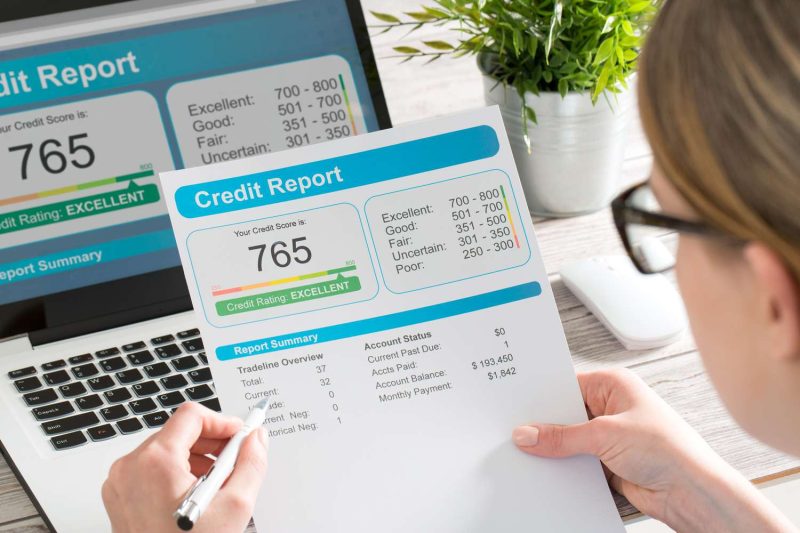Average Credit Scores by Generation

One thing that improves with age is creditworthiness. A study of average credit scores by generation shows that every major demographic group has an average credit score that is better than the generation before it.
In an analysis from the credit rating agency Experian, scores show a slow but steady climb from the youngest Generation Z consumers through millennials, Generation X, and the baby boomer generation.
And best of all is the so-called Silent Generation. This group includes people aged 78 and over. They’re the only ones who rate a very good score on the FICO 8 scale.
Key Takeaways
- Americans’ average credit scores rise slowly but steadily with each generation.
- Age is not a direct factor in credit score calculation, but the length of time that a consumer maintains a sound credit history is a factor in calculating the score.
- Credit scores have been rising across all generations over the past decade.
How Credit Scores Breakdown by Generation
The average credit score for all Americans was 715 in 2023, an improvement of one point from 2022.
The range in credit scores from Generation Z to the Silent Generation is wide. Based on the commonly used FICO 8 score, the credit reporting agency Experian calculates that Gen Z consumers, those aged 18 to 26 as of Experian’s data from 2023, had an average score of 680 in the third quarter of 2023, while the average among the oldest generation (the Silent Generation), aged 78 and older, was a full 80 points higher, at 760. That makes them the only group whose average falls in the very good credit score range.
Millennials, aged 27 through 42, are not scoring far above Generation Z, with a 690 average. From there, it’s a 19-point bump to the average of 709 for Generation X, those aged 43 to 58, and then an even bigger jump to the 745 average for baby boomers, those ages 59 to 77. Note that the ages are as of 2023 from when the data was sourced.
Age is not an explicit factor in calculating credit scores. However, older consumers have had opportunities to build up their credit history and establish a positive repayment track record for longer than younger ones have.
| Average FICO 8 Score by Generation | ||
|---|---|---|
| Generation | 2022 | 2023 |
| Generation Z (ages 18-26) | 679 – Good | 680 – Good |
| Millennials (27-42) | 687 – Good | 690 – Good |
| Generation X (43-58) | 707 – Good | 709 – Good |
| Baby boomers (59-77) | 743 – Good | 745 – Good |
| Silent generation (78+) | 760 – Very Good | 760 – Very Good |
Credit card balances have been rising across the United States since 2012. Balances exceeded $1.1 trillion at the end of Q1 2024.
How Credit Scores Are Calculated
The first thing to understand about credit scores is that more than one scoring model exists. However, the most commonly used credit score, across the majority of lenders and tracked by all three of the credit reporting agencies, is the FICO 8 score.
FICO 8 scores can range from 300 up to 850, and take into account the following five weighted factors:
- Payment history. This is the single most impactful factor in your score, weighted at 35%. It measures how often you have made payments late or on time.
- Credit utilization. Also heavily weighted, at 30% of your score, credit utilization refers to how much of your available credit you are using at a particular time. In other words, how much debt do you have relative to your available credit lines? Lower utilization rates are better for your score.
- Length of credit history. At 15%, the weighting of this factor is notably smaller. But a credit history that stretches back a few decades, rather than just a few years, will improve your score. This is part of the reason older consumers tend to have higher credit scores.
- New credit inquiries. How many times you’ve applied for new credit in the past two years can put a dent in your score if it’s a high number. At 10% of your total score, this can have an impact, but it is far less important than the factors above.
- Credit mix. Similarly, showing you’ve been able to manage a mix of different credit types (e.g., credit cards versus installment loans like a mortgage or auto loan) counts for 10% of your score.
How Is My Credit Rating Determined?
Three major credit rating agencies maintain and update credit scores on American consumers.
All three agencies assign a three-digit score that indicates how much credit you have acquired and how good you are about repaying it on time. Any time you request a loan or a credit card, the company you apply to will tap into one of these agencies and find out your current score. Whether you get the loan and what rate of interest you will be charged depend on that score.
What Is a ‘Good’ Credit Rating?
A credit rating of 670 or above is generally considered good. The score range is 300 to 850. Any score below 670 is fair or poor. A score of 670 or above is good, very good, or exceptional.
How Can I Find Out My Credit Score?
You can monitor your credit score any time online. It is available for free from websites like Credit Karma, and it is available in many online payment apps including those from credit card issuers like American Express and Citibank.
You are also entitled by law to a free credit report from each of the three major credit reporting agencies. These can be accessed at AnnualCreditReport.com. This is a much more detailed document showing your entire recent history of transactions using credit and is the basis of your credit rating.
What States Have the Highest and Lowest Credit Scores?
In 2023, Minnesota had the highest average credit score with 742. It was followed by Vermont (737) and Wisconsin (737). The state with the lowest average credit score in 2023 was Mississippi (680).
The Bottom Line
Experian sees its latest report as relatively mixed news. Average scores in 2023 improved slightly from 2022. However, the agency also expressed concern that consumers had largely spent savings accumulated during the COVID-19 pandemic and that rising monthly payments for credit cards and various loans might be taking up larger shares of monthly income.
The future economic forecast could improve, especially regarding credit scores, but it could also include financial headwinds.







